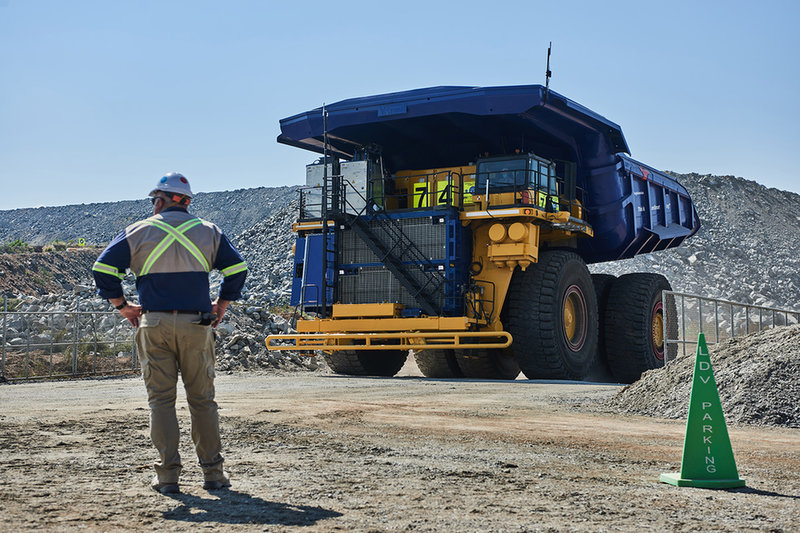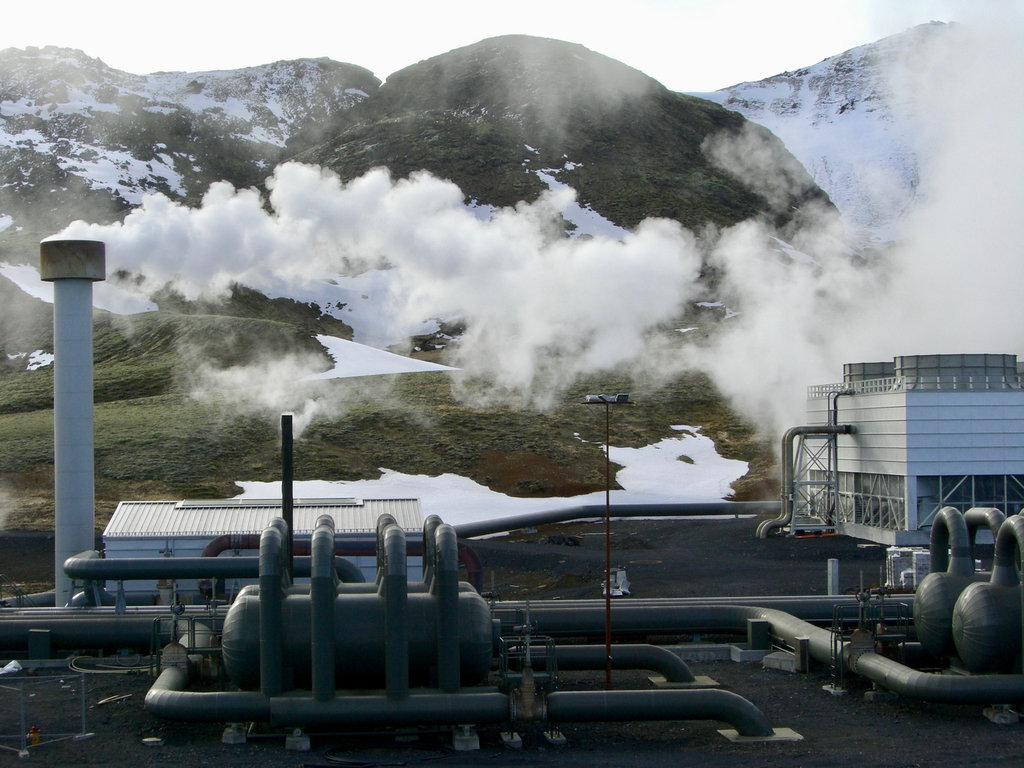Feature
Explaining green hydrogen, and its role underground
Standfirst: Is green hydrogen truly the golden child of future energy, or just a flash in the pan? Kit Million Ross explores the debate.

Anglo American’s hydrogen-powered truck. Credit: Waldo Swiegers/Bloomberg via Getty Images
In the past few years, the energy industry has been abuzz with talk of green hydrogen. Some proclaim it as the solution to a cleaner energy future, attracting huge interest and investment. Policymakers across the globe, from Indiato Germany and most recently the US, have prioritised and incentivised green hydrogen projects through legislature.
In the mining industry, hydrogen has massive potential as a cleaner fuel, particularly in haulage operations. But some criticisms have been raised, and some problems undoubtably still need solving. As the industry rushes to adopt hydrogen technologies, it’s worth examining the pros and cons of green hydrogen, both for the mining industry and more broadly.
But what is green hydrogen, really?
While hydrogen is the most abundant element in the universe, capturing it in a form useful to us requires the use of at least one of various processes. One of these, electrolysis, involves splitting water (H2O) into hydrogen (H2) and oxygen (O2) using an electric current. When the electricity used in the process is generated from renewable sources, the end product is referred to as “green hydrogen”.
There has been some debate recently about what precisely can be referred to as green hydrogen. In February 2023, the European Commission began debating whether hydrogen created using nuclear power (currently known as “pink” or “purple” hydrogen, part of an entire rainbow of hydrogen classifications) could rightly be called “green”. This sparked some disagreement between French and German officials; the former is well-known for being pro-nuclear power, the latter remains fervently against.
Aside from these, brown hydrogen is also known as syngas, made from gasification of coal. Grey hydrogen comes from reforming natural gas, but if emissions from this process are stored in carbon capture schemes, this becomes blue hydrogen.
Hydrogen in mining
As an industry, mining is significantly harder to electrify than others, and here, hydrogen power could represent a way to decarbonise operations. Many mining operations are situated in remote locations where access to traditional energy infrastructure, such as solar or wind farms, is limited. Mining vehicles are also incredibly power-hungry, and developing electric batteries that can sustain these enormous vehicles for long periods of time is challenging, and at present, impractical.
Here, green hydrogen fuel cells offer a different solution for remote mining operations by providing a portable and energy-dense fuel source that can be easily transported and stored. Furthermore, green hydrogen infrastructure can enable the electrification of mining processes, such as ore crushing and milling, by supplying clean electricity to these operations.
Fortescue Minerals Group is in the process of replacing one mine’s diesel coaches with hydrogen fuel cell-powered coaches.
Today, one of the most dominant uses of hydrogen in mining is in powering vehicles. The mining industry heavily relies on diesel-powered machinery, which emits large amounts of greenhouse gases and other pollutants. To combat this, several companies at mines across the world are working to replace their diesel fleets with vehicles powered by hydrogen fuel cells.
In Australia, Fortescue Metals Group is in the process of replacing its fleet of diesel coaches at its Christmas Creek iron ore mine with hydrogen fuel cell-powered coaches. Meanwhile in Chile, Antofagasta Minerals launched a pilot scheme wherein it simulates a hydrogen-fuelled mining truck to test its performance in real mining conditions.

Hydrogen production in Iceland. Credit: Glenmore via Shutterstock
The advance of hydrogen technology
While green hydrogen holds immense potential for the mining industry, there are several challenges to overcome. The high initial costs of renewable energy infrastructure, electrolysis equipment, and fuel cell technologies can be major financial barriers for widespread adoption. Producing these technologies at such a scale remains a relatively new market, so technology and supply chain efficiency remains relatively low.
As a result, green hydrogen comes at a significantly higher price than blue, grey, or brown hydrogen. According to a Thematic Research Report on Hydrogen in Mining, prepared by MINE Australia’s parent company GlobalData, hydrogen produced from fossil fuels costs around $1.7 per kilogram, while renewable hydrogen costs between $2.8 and $6.2 per kilogram.
PwC predicts that globally, the cost of producing green hydrogen will fall by 50% by 2030
However, as the technology advances and economies of scale become a reality, the costs are expected to decrease. Research by consultancy PwC predicts that globally, the cost of producing green hydrogen will fall by 50% by 2030 and continue falling at a slower rate until around the year 2050. The company predicts that by 2050, green hydrogen production costs could be as little as €1 ($1.09) per kilogram in some parts of the Middle East, Africa, Russia, China, the US and Australia. Collaboration between mining companies, governments, and research institutions is crucial to driving innovation, reducing costs, and creating policies that encourage investment and research.
One other significant concern is the explosive nature of hydrogen gas. The US Occupational Safety and Health Administration (OSHA) notes that: “Hydrogen used in fuel cells is a very flammable gas and can cause fires and explosions if it is not handled properly”. This is worrying enough above ground, but in the tightly enclosed space of a mine, it represents an enormous risk. Unlike natural gas, there are currently no known odorants that can be added to hydrogen to effectively alert people to a leak in time to prevent a potential disaster. Hydrogen burns invisibly, making any leaks more lethal. Improvements in hydrogen detection will be necessary to bring it to safe use standards underground. For this, we need to look to the stars; or at least, Nasa.
Nasa has been carrying out research in hydrogen detection systems. In the amusingly titled article Explosive Lessons in Hydrogen Safety, Nasa engineer Russel Rhodes discusses Nasa’s work to develop “a visual scanning system that can better detect, visually locate, and quantify the hydrogen present” in their systems. Several of Nasa’s systems have centred on materials that change coulour when exposed to hydrogen, requiring a robotic observer to verify the colour changes, or better still, a human. However, it may be some time before systems like these can be widely deployed in the mining sector, and until such time as they are, we must approach the use of hydrogen underground with extreme caution.

Credit: The routes of hydrogen production. Source: GlobalData Thematic Research, Hydrogen in Mining.
The outlook for hydrogen in mines
The integration of green hydrogen into the mining industry is a major step forward for sustainability and a more environmentally friendly mining industry. By reducing emissions, improving air quality, and enabling the integration of renewable energy sources, green hydrogen offers a route to a more sustainable future for mining operations.
However, while green hydrogen is a potential solution for a heavily polluting industry that is near-impossible to electrify through traditional means, there are still major hurdles on the road to a hydrogen-powered mining industry. As is so often the case, more research, more funding, and good policymaking are needed before the dream of green hydrogen-powered mining can become a worldwide reality.